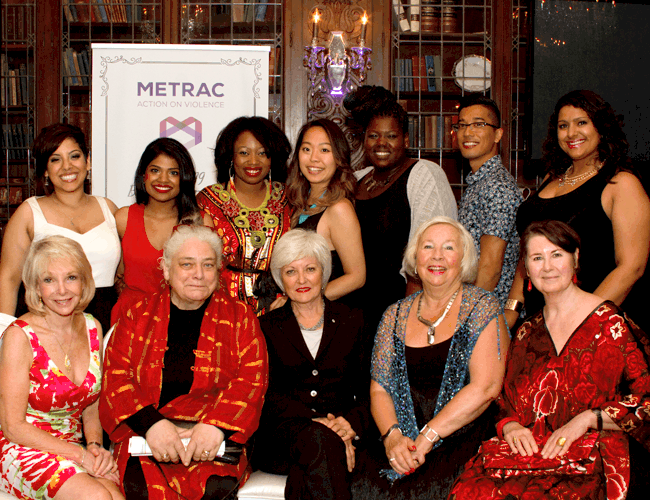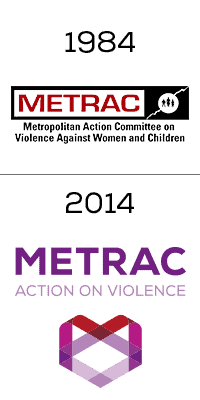“We knew strategies for making women safer had to be grounded in the experiences of women; it wasn’t the criminologists, the police, the judges and lawyers we primarily looked to for solutions. Once we looked at women’s everyday realities, the strategies for real change became evident.” (Patricia Marshall, founding Executive Director)

We started because women saw violence in their community and decided to act.
METRAC’s beginnings date back to the summer of 1982 when a number of brutal sexual assaults and murders of women occurred in the City of Toronto. A group of women organized themselves as “The Toronto Pink Ribbon Committee” to demand something be done. The committee approached the Metro Toronto Chair in office, Paul Godfrey. Acting on their suggestions in collaboration with the Metropolitan Toronto Board of Commissioners of Police, a task force on public violence against women and children was established. The task force worked with Metro Toronto staff and council members, more than 80 individual community volunteers, local experts and community and service agencies. A Final Report of their efforts was released in March 1984. It recommended that the Metropolitan Toronto Council appoint a body to implement all recommendations and the “Metropolitan Action Committee on Public Violence Against Women and Children” was established. A ten-member Board of Directors was appointed, headed by Toronto lawyer and then-Police Commissioner Jane Pepino.
Our logo and name

When we formed in 1984, METRAC’s logo and name reflected our work. We were a committee focused on critiquing and changing policies, practices, laws and structures that put women and children in harm’s way. We primarily served the “metropolitan Toronto” area, which until 1998 was comprised of downtown Toronto and associated towns, villages and townships. But as time passed, we had to shift to match changing needs and opportunities:
- an increasingly connected city, province, country and world where technology, with all its gaps, can also bring us closer together
- a growing understanding of gender-based violence and how it impacts people differently depending on their identities and experiences
- more research that demonstrates the value of everyone’s participation in preventing violence
In 2014, the year of our 30th anniversary, our relaunched logo and name encompass these new realities. We will continue building on a strong past taking action on violence to build a safer, equitable future for everyone.
